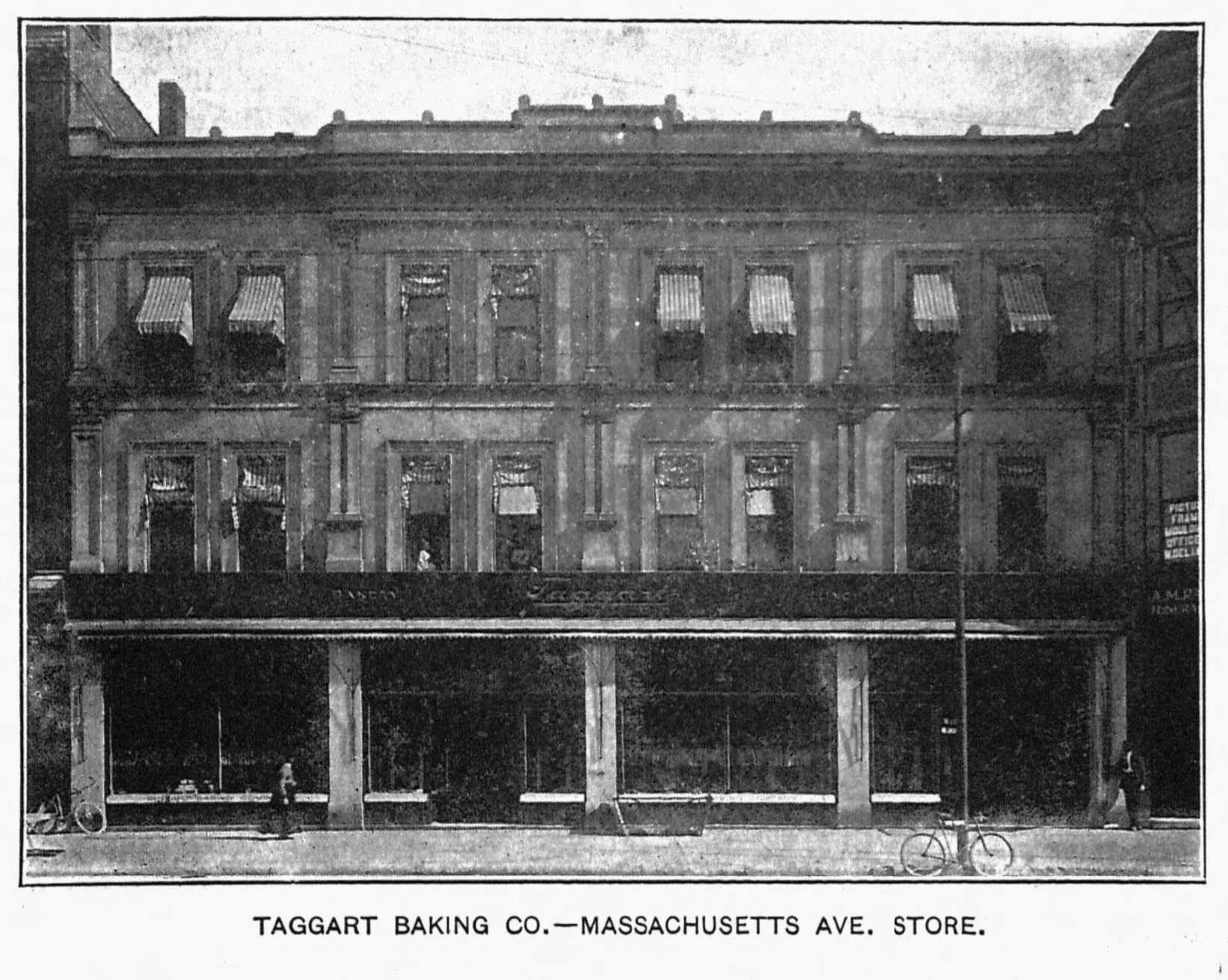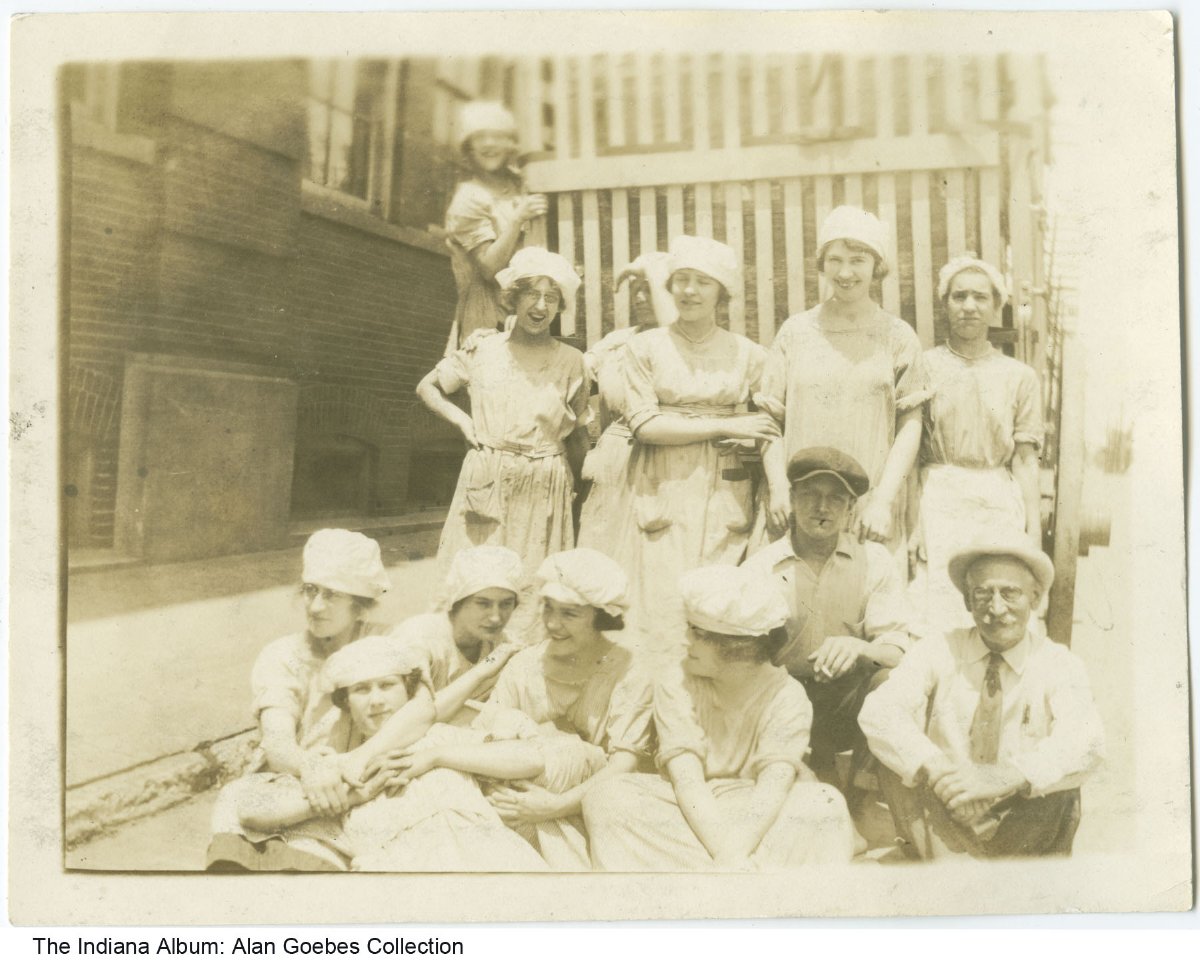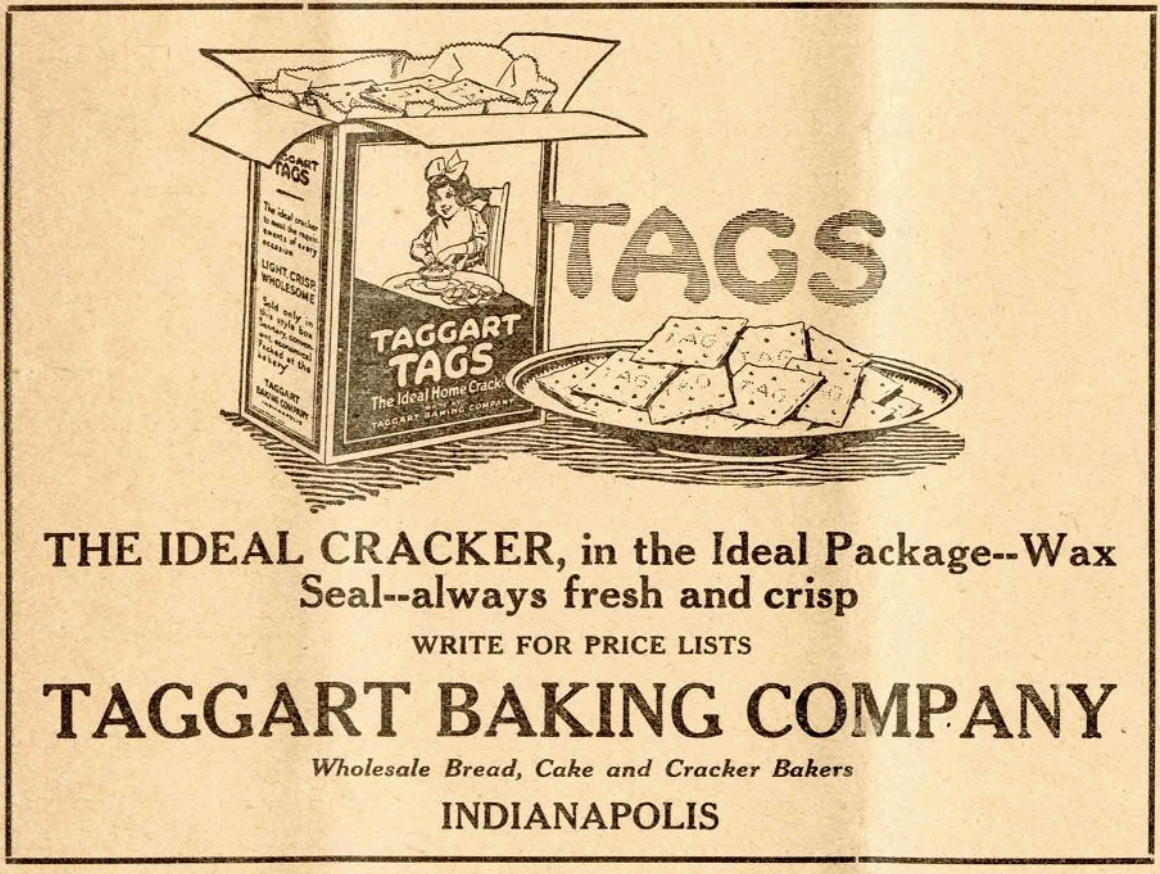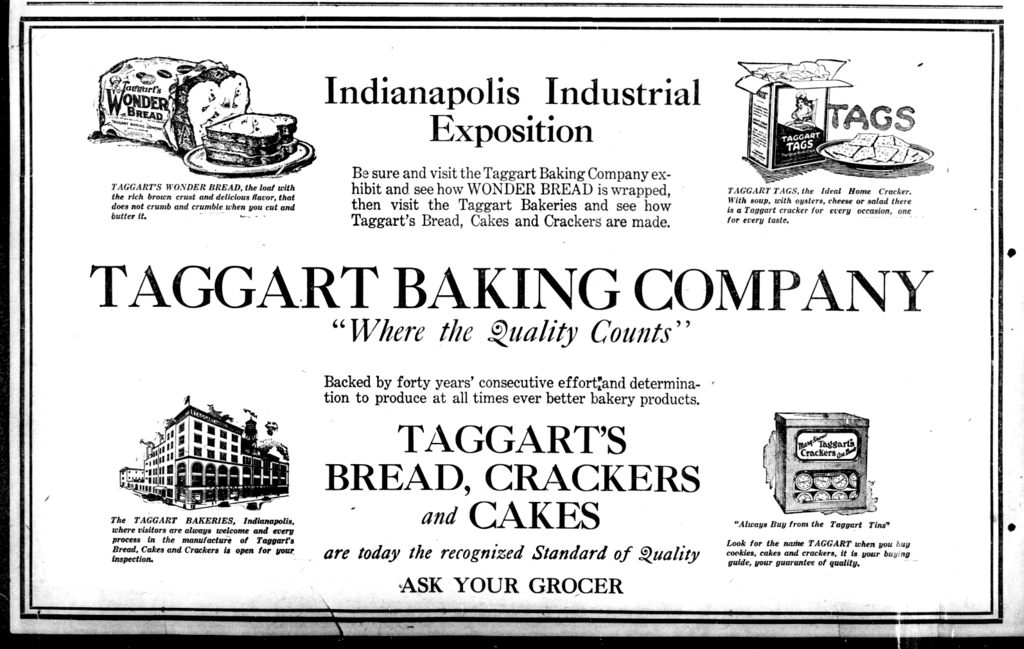What became known as the Taggart Baking Company had its origins in an Indianapolis bakery that brothers Alexander and Daniel Taggart established on Pearl Street, next to the original building, in 1869. They had learned the baking business from their father on the Isle of Man, one of the British Isles located in the Irish Sea, and had immigrated to the United States shortly after the Civil War.

In 1885, Alexander Taggart joined with Burton Parrott to open the Parrott-Taggart Baking Company, and then, in 1890, he helped found the United States Baking Company. The Parrott-Taggart factory on Pennsylvania and Georgia streets served as the company’s local branch. Eight years later, the company merged with the fledgling National Biscuit Company (Nabisco), although it continued to operate locally under the Parrott-Taggart name.
Taggart sold his stock in the Parrott-Taggart Baking Company in 1904 and founded Taggart Baking Company the following year with another brother, Joseph, and his son, Alexander L. Taggart. Within a few years, the company had grown into the largest bread bakery in the state, running 19 ovens daily with a capacity of 300,000 loaves per week. In addition to its growing bread business, Taggart Baking Company also made crackers, including the popular Jersey Butter Crackers that were intended to be eaten with oysters.

Taggart Baking Company’s main factory was located at 18-28 North New Jersey Street, and its baked goods were sold at nine retail stores in Indianapolis. The flagship store was located at 233-239 and featured a lunchroom, where customers could enjoy sandwiches made with one of the bakery’s many varieties of bread.
In May 1913, the Taggart Baking Company announced plans to expand its business model to include the manufacture of “fancy cakes and sweet crackers.” The Massachusetts Avenue lunchroom, which had been hailed by the as “one of the oldest restaurants in Indianapolis,” was shuttered to make way for a larger sales room, and Taggart added to the plant on New Jersey Street, making it seven stories tall.

To assuage consumer concerns about the cleanliness and safety of “factory-made” baked goods, everything in the new Taggart plant was painted a snowy white, including the ovens. Machinery replaced human hands, even in the delicate work of icing the dainty cakes and pastries. In a specially designed “icing room,” for example, cakes were suspended from a mechanical conveyer belt, dipped into troughs of icing, and then whisked away to the packaging area. Producing baked goods that were touched little by human hands in this white environment promoted the idea that everything that came out of the Taggart factory was made in a sterile environment.
By 1920, as consumers became increasingly comfortable with both the convenience and the taste of factory-made bread, the Taggart Baking Company invested in state-of-the-art ovens and packaging machinery and prepared to launch its newest product, .

Four years after it was introduced to Indianapolis residents, Wonder Bread became a national brand, when the Continental Baking Company purchased Taggart Baking. Alexander L. Taggart became a vice president of Continental, and other Taggart family members continued with the company in executive capacities. Although the factory in downtown Indianapolis initially continued to operate under the Taggart name following Continental Baking Company’s acquisition, by the 1930s the plant was generally referred to as the Wonder Bread bakery.
Alexander L. Taggart resigned from Continental in 1926. The following year, he founded Campbell-Taggart Associated Bakeries, a holding company that owned several different bakeries scattered throughout the country. In 1933, his son Alexander L. Taggert Jr., along with his brother Edward Taggart, founded T and T Baking Company. Although his father initially balked at providing capital for his son’s new baking venture, Campbell-Taggart Associated Bakeries acquired T and T Baking in 1936 and renamed it Colonial Baking Company.
The Taggart family remained involved with Colonial Baking Company until the death of Alexander L. Taggart III in 2003. However, the last loaf of bread to be baked by a local factory directly associated with the Taggarts came out of the oven in 1986, when the production of Colonial Bread was moved from the Indianapolis bakery at 2465 Winthrop to a plant in Muncie.

Help improve this entry
Contribute information, offer corrections, suggest images.
You can also recommend new entries related to this topic.